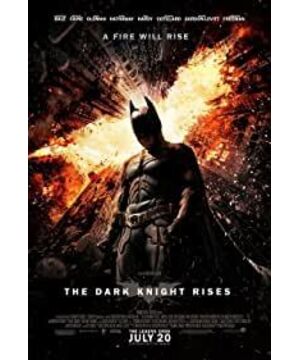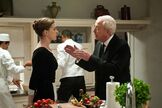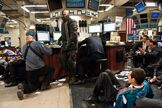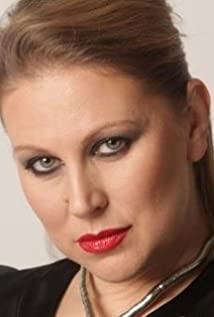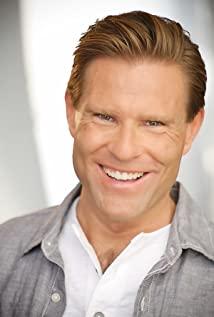As Slavoj Zizek said, "The Dark Knight Rises" (The Dark Knight Rises) once again proves that Hollywood blockbusters are an accurate indicator of the current social ideological impasse. The ending of the film is full of political correctness and suitability for all ages. It is not only manifested in the ending itself which indicates that evil is invincible, but also reflected in various details-such as heroes sacrificing themselves, righteous successors, and children are the hope of the future ( Nolan deliberately did not let ordinary Gotham citizens appear in the most stressful moment, but let a car of orphanage children witness Batman's righteous act) and so on.
More in line with mainstream values, Alfred, the butler, looked up in a cafe in Florence and saw Batman/Bruce Wayne and Selina Kyle as a goddess. The gesture is vacationing together.
As in the previous plot, Ah Fu tried to prevent Bruce Wayne from coming out again, saying how much he wished to see Wayne taking his wife and even children leisurely in the cafe, so it can be considered that it echoes Ah Fu’s dialogue. The last scene means that Batman is together with Catwoman after he retires. The meaning of this togetherness should refer to the relationship between men and women rather than working partners.
It is worth noting that Catwoman has almost always been shown as a lesbian before. She haunted and lived in the same room with another blonde woman, Jen, and provoked mob rule in the villain Bane (please note that the movie is indeed mob rule, and the real citizens are mostly out of fear at this time. After staying behind closed doors or being wiped out because of the wealthy family, the ruler is the criminal gang who came out of the Black Gate Prison), there is a scene of Jan standing lovingly behind Selena and saying, is this not what you want.
The moral of this dialogue will be discussed later, let's talk about the position, tone and dialogue itself. Those who have watched the movie can recall this scene again. If Jane and Selena are just ordinary roommates or even further same-sex friendships, this kind of dialogue posture of standing behind the person and vocalizing at the shoulders and neck is still not Appropriate-Firstly, this breaks through the human intimacy threshold. Secondly, the back and shoulders are the weaknesses, but Catwoman, who has a strong distrust of people and always wants to save her life, is not afraid to expose these weaknesses to Jane's before.
Analyzing Selena herself again, in the movie, her feminine characteristics are the most obvious. This is not limited to external features such as red lips, crisp breasts, bee waist, and hips. New Freudian psychologist Karen Horney has concluded that women have more masochistic tendencies than men, including: 1. Use direct expressions of damage or aggression to relieve depression; 2. View I am weak and helpless and ask for more consideration implicitly or bluntly on this basis; 3. Emotionally dependent on the opposite sex; 4. Show self-sacrifice; 5. Feel used or exploited, and push the blame on the opposite sex .
Excluding 3 and 4, you can see that the other points are fully reflected in Catwoman's behavior pattern. In fact, Catwoman’s yearning for revolution and whispering to Wayne at the prom that "a storm is coming" are based on 1, 2 and 5. The biggest difference between her and the other heroine, Miranda Tate, is that Milan Da cherished revolutionary ideals. On the one hand, this ideal came from the organizational philosophy, which was similar to the destruction of Sodom and Gomorrah by God, and on the other hand, came from the memorial of his late father. Although the role is set to be a female out of plot needs (including gaining Bain's love and one-night stand with Wayne), Miranda's thinking and behavior patterns are not too inconsistent with men.
Catwoman is different. She was commissioned to steal fingerprints and went along with a necklace. She hated Wayne and the wealthy. She sent Batman to Baine out of self-protection. All of this was due to her personal likes and dislikes. It does not come from the pursuit of a certain idea (such as robbing the rich and helping the poor, such as creating chaos). As for her wholehearted desire to get the "cleanup program", she is unwilling to take the corresponding responsibility for her actions but blames the social rules for not giving her a chance to do it again. This is almost coquettish (of course Batman eats this set very much).
Catwoman has considerable identification with her female role, which is reflected in all aspects from dress, dress up to subconscious thoughts and actions (in a tavern fight scene, she pretends to be weak, scared, crying and borrowing after the police enters the field. Machine escape), and when this same-sex identity cannot accompany the symbiosis of attachment to the opposite sex, heterosexuality cannot be produced.
From the background of the film introduction, Catwoman was impoverished since she was a child, and couldn't get out after accidentally embarking on the path of the thief. From her only stealing property from men (Wayne’s necklace, car, passerby’s watch) and being merciless to men (no matter whether he is alive or dead after using the congressman), a generally inseparable catwoman’s growth roadmap can be It is easy to draw it out-because of poverty and beauty, the opposite sex is despised, and after entering a criminal organization, it is assigned and used by the opposite sex.
In this context, Catwoman used to tease, exploit and harm the opposite sex to complete her complaint against the patriarchal society. Feminist writer Jill Johnston believes that feminism is essentially a massive accusation, and lesbianism is the way out. It can be said that before meeting Bruce Wayne, Catwoman was a practitioner of Johnston.
The appearance of Wayne reconstructed the simple worldview that Catwoman constructed based on her own experience. The educated aristocrat Wayne, the Puritan rich Wayne, and Batman Wayne are very different from the usual trivial and paranoid images of patriarchal defenders in traditional patriarchal societies.
Catwoman's first hesitation happened when Wayne broke her family. She found that Wayne was not angry and did not act gaffes. It was very different from the opposite sex who lost a watch, a wallet or even an apple. The second time it happened when Bain beat Batman to mutilation. In fact, there was Batman’s desire to die, but Catwoman, who didn’t know about it, believed that she contributed to all of this, and Batman’s true identity was also exposed. It shocked her-she caused him to bankrupt his family a moment ago, and then he went to fight for the city and promised to give her a "cleanup program"!
Before this, she always attributed her personal experience to the opposite sex, and everything she did to the opposite sex can be regarded as a reasonable revenge of women against the patriarchy, which is to recover the opposite sex's owed to her. But Wayne’s personal commitment was obviously too much in her opinion. Later, Batman escaped from the regeneration pool (Lazarus Pit), and Catwoman said to him "You don't owe them", but she was actually saying "You don't owe me". . In addition, after witnessing Batman being maimed by Bain, Catwoman tried to escape from Gotham City, which also meant her abandonment of her self-identity. A person with a strong self-identity will not want to escape. Here we have to distinguish between escape and escape, even though Selena said to Detective John Blake, "You should be as afraid of Bain as I am." Going up seemed to be an escape, but judging from her confusion, chaos, and desperation, leaving Gotham City is closer to escape.
Back to the mob rule in Gotham City, Catwoman, who had already doubted her identity, was given the final blow by her female companion. The female companion whispered to her intimately behind her back: Isn't this what you want? But the sacrifice Wayne made before the scene overlapped was enough for her to make a personal judgment of likes and dislikes, that is, "this is not." In fact, even before the subversion of identity, Catwoman’s attitude towards revolution was only ambiguous—I am adaptable. At
this time, Catwoman completed the castration complex in Freud’s theory. Identification of the same sex gave way to identification of the opposite sex (although it was only Bruce Wayne of the opposite sex).
Looking back at Horney's theory again, after completing the castration complex, 4 (showing self-sacrifice) was also reflected in Catwoman. In the final battle, she apparently made self-sacrifice for Batman. There is a conversation:
Selina: You could have gone anywhere, but you came back.
Bruce: So did you.
Selina: Well then I guess we're both suckers.
(Catwoman : You could have gone anywhere, but you came back. .
Batman: So are you.
Catwoman: It seems we are all fools.)
Here, Catwoman sums up the sacrifice spirit of herself and Batman with crude suckers, which is actually a kind of lust first.
As for 3 (emotionally dependent on the opposite sex), when Catwoman easily blasted through the tunnel with the motorcycle that Batman gave her out of unreserved trust, the mixed emotions on her face explained everything.
As a heroic film, the ending of "The Dark Knight Rises" must be orthodox-the social organization is orthodox, and the relationship between the sexes is orthodox. And when this orthodoxy is challenged so that it is almost impossible to justify it, everything can only be handed over to Batman/Bruce Wayne, a hero with perfect personality created by traditional Western values, and he surpassed in "The Lost of Shadows" The id, realizes the self in "The Dark Knight", and finally completes the superego in "The Dark Knight Rises".
View more about The Dark Knight Rises reviews


